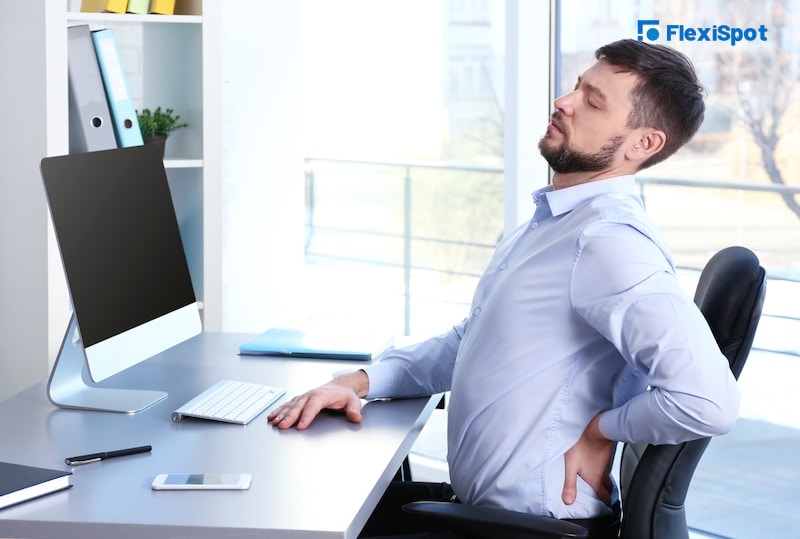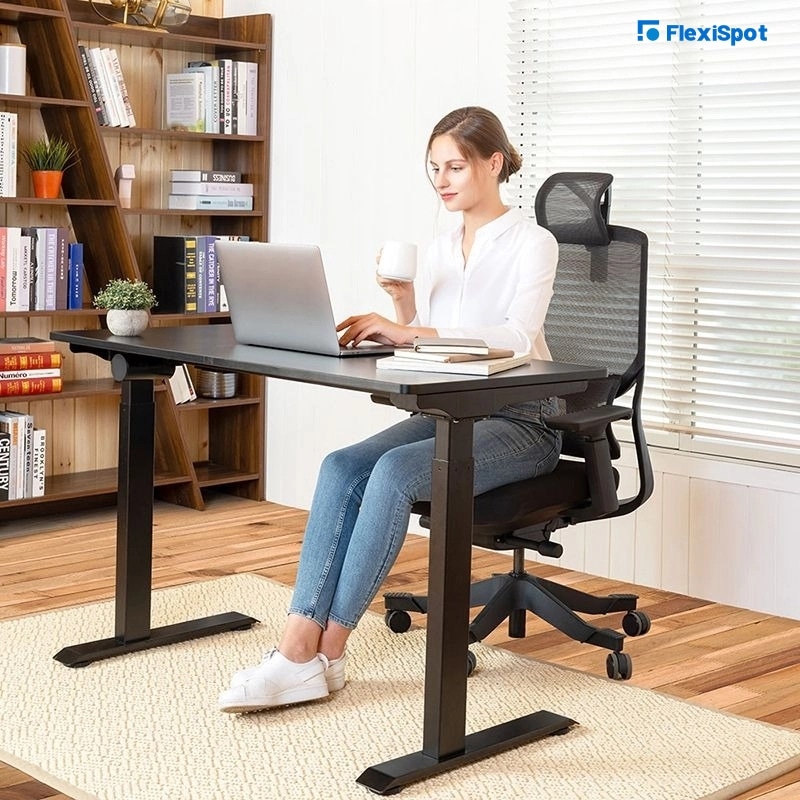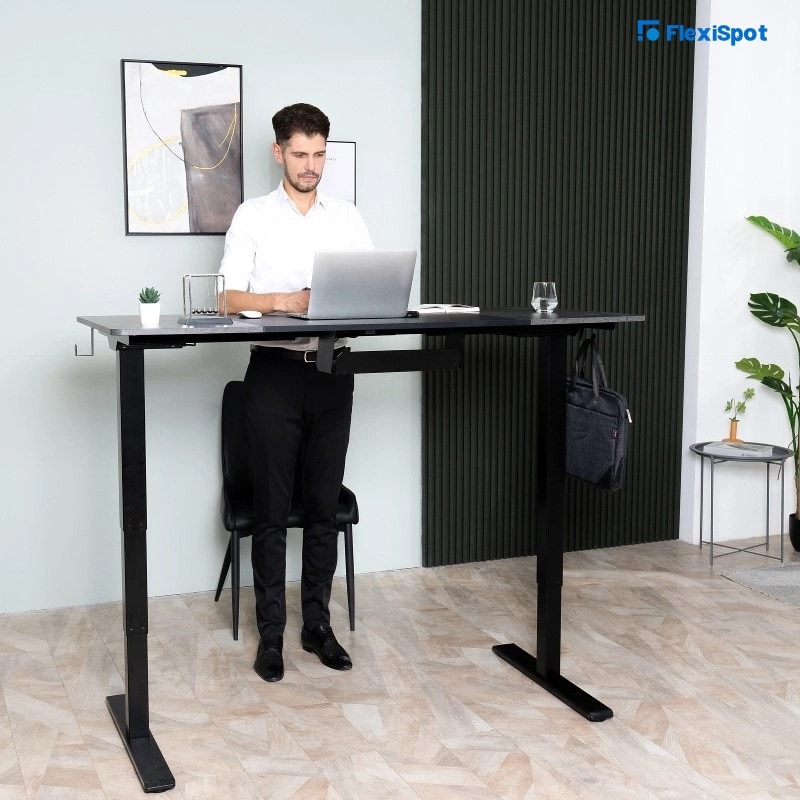A desk job may seem appealing when compared to a laborious occupation. However, it has its own set of rather terrible repercussions people often overlook until it's too late. On top of the list of the side effects of being chained to a desk is back pain caused by poor posture.
Back pain is a common complaint among individuals who sit in a chair for hours tapping away on their laptops. While back pain may become severe if left untreated, it can be easily prevented by using an ergonomic office chair.
Despite being such a prevalent issue with a direct cause, back pain continues to affect a large majority of people. If you tend to keep a poor posture while sitting, perhaps it’s time you invest in an ergonomic office chair to relieve your back from the strain you have been putting on it.
With that said, identifying whether your backache is due to a bad posture or not is essential to treat it right. Otherwise, any spine-supporting gear will not make much difference to your suffering. To help you do that, ahead, we go over the signs of poor posture causing back pain and how that is possible.
Poor Posture As The Cause Of Back Pain
Do you find yourself slouching when working? Or does your neck fall forward while standing/sitting?
Many people often don't realize that their spinal posture is compromised. As a result, they continue to practice the same sitting/walking stance, putting pressure on their backs that leads to pain.
So the first step to fixing the backache issue is detecting if your pose is messed up and which unhealthy spine positions you attain that are causing you back pain.
Here are the top unsupported postural habits you might be doing.
1. Slouching while sitting in a chair. Letting go of one’s body loose and slumping is perhaps the most common poor postural position. When plowing through office files, a person can feel stiff and sore, causing them to supposedly loosen up (read: slouch), afflicting undue pressure on their spine.
2. Lying on your belly while using a laptop or going through documents forces the lower back to curve inwards. Resultantly your core muscles feel stressed and start to ache.
3. Not having a proper workstation and working on a bed or sofa. No matter how much you believe that you keep your spine straight when sitting on the bed or couch, your back stance is bound to be compromised.
4. Not standing straight. Many times we don’t realize that our knees are slightly, almost imperceptibly, bent, leading to back pain.
5. Bending wonkily when gardening or tending to plants/grass.
6. Vacuuming while hunching and stretching one arm to do the job.
7. Picking up heavy objects without back support.
If the acts mentioned above ring a bell for you, you must engage in at least one of them. Fixing unhealthy postural positioning of the spine is vital to save oneself from agonizing backache.
How does An Unsupported Spine Posture Result In Back Pain?
Unhealthy sitting/standing stances significantly impact your back and tissue health. To better understand the mechanism of how poor posture leads to back discomfort, let’s go over the effects sitting has on one’s spine.
Slouching For Long Hours
Like all body parts in the body, your back is structured so that it sustains weight evenly, not straining any one area of tissue. But when you slouch, hunch, or slide forward while sitting, your lower back is left unsupported, putting extra pressure on specific sections of your back muscles. On top of strained tissues, bad posture reduces blood flow to the lower back, causing soreness and eventually pain.
If you don’t want to hurt your lower spine area because of your desk job, use back-supporting gear to stay upright in your chair. Back support cushions and belts are a common solution to treating/managing back pain. But the easiest and most effective aid to prevent/ reduce pressure on your spine is an ergonomic office chair (more on it later in the piece).
Sitting With Your Spine Unaligned
If you make the conscious effort to keep your back upright and not hunch forward while working at a desk, you may be successful in getting around the habit of slouching. However, doing so still doesn't provide sufficient support to your spine from top to bottom. Consequently, some spine discs may have to sustain more weight than others, stressing particular sections of back issues.
That is why an unsupported/unaligned spine puts a person at risk of getting back pain. Understandably, to deal with or bypass said issue, keeping your vertebral column upright is imperative.
Lying On Your Tummy
As tempting and apparently relaxing as it may seem, lying on your belly is not good for your backbone and overall posture. As already mentioned, when you lay face down, your spine curves inwardly right above your hip, and your hipbone extends, further intensifying the improper angle. As a result, your lower back tissues get stressed, which eventually turns into a more serious discomfort/pain.
To put simply, any sitting, standing, or lying position that misaligns one's spine causes tensions in certain sections of posterior muscles. To prevent that, postural correction is a must.
Once you deliberately work on keeping your spine straight, you will ultimately get in the habit of avoiding unhealthy postures. To help you correct your stance, here are some simple changes to how you place your back when sitting that will make a world of difference for you.
Fixing An Incorrect Posture
Restoring proper posture is only possible once you know where the problem exists. That is, you need to know how you mess up your pose to work on the particular sitting, standing, or walking style.
If you know the area of your spine most affected and its cause, you should take relevant corrective measures.
Correcting Bad Sitting Posture
Sitting with an improperly positioned spine is undoubtedly the most wildly common problem for all, and more so for those with a desk job. Regardless of where and why you sit incorrectly, you need not do so to prevent worsening (or getting back pain if you don't already have it) back pain.
Firstly get a well-constructed ergonomic office chair for your job; whether you go to your workplace or work from home, you need to have a back-supporting seat. Typically, working a desk job is the culprit of causing back pain in people as it requires sitting in a chair for long hours. Therefore, having an ergonomically designed office seat is a must for all employees who are chained to their desks during working hours.
Don't forget about your knees when seated because their placement can also impact your back. Be sure that your knees come right at your hip level or slightly above when in a chair. If they are not parallel to your pelvis, the resulting stance will incorrectly stretch and strain your spine.
Keep your chest open and shoulders taut and straight. More often than not, people let their shoulders loose, bending forward. While that may not seem that much of a hazard for your back, it certainly is. Your upper spine is severely stressed and de-shaped if your collar bones aren’t stretched rightly.
Start wearing a belt or back support to keep your vertebra straight while sitting or even walking. Since you cannot carry your ergonomic chair everywhere you go, you need other aids to maintain an upright posture. And back-supports are excellent for that. Not only do they retain the wearer's spine straight, but they also keep the neck upright.
A correct posture positions a person’s ears right above their shoulders, ensuring that the neck doesn’t bend forward. If you don’t want to invest in any spine-supporting gear, always pay attention to the placement of your ears. Whenever you notice your ears falling ahead of your shoulders, fix your posture. That said, be gentle with your movements and don’t crane your neck too much trying to bring your ears over the shoulders.
Correcting An Incorrect Standing/Walking Posture
First and foremost, keep your hips aligned with your back. One of the most commonly made mistakes when presumably restoring posture is keeping the spine straight and sticking the butts out, the Donald Duck pose.
Steer clear of doing that because it stretches your hipbones, forcing your lower back to bend inwards. If you struggle with aligning your butt and back, practice balancing yourself in a plank position frequently (of course, with proper form). Planks are excellent at bringing the upper body, spine, tailbone, and hip bone in one line.
Stand erect with your lower back upright, and your tailbone tucked in. In simple words, be sure your back is perfectly flat, and you are not inclining forward, even slightly.
Don't concentrate your weight on one leg by leaning on it. Doing so is standard practice, especially when conversing while standing. Avoid doing that to maintain the correct posture.
Final Words
If you work at a desk and don't have the suitable provisions to support your spinal column, you should get those to improve your posture and eliminate backache from your life.
But if you are not in a chair for long hours and still experience stiffness, soreness, pain, or discomfort in your posterior muscles, you should consult an expert as it may not be because of an improper posture.
That said, don’t put yourself at the risk of developing back problems by not keeping an upright posture because once your spine gets misaligned, you will most likely suffer from pain. Therefore, sit and stand straight without arching your back at any point.





